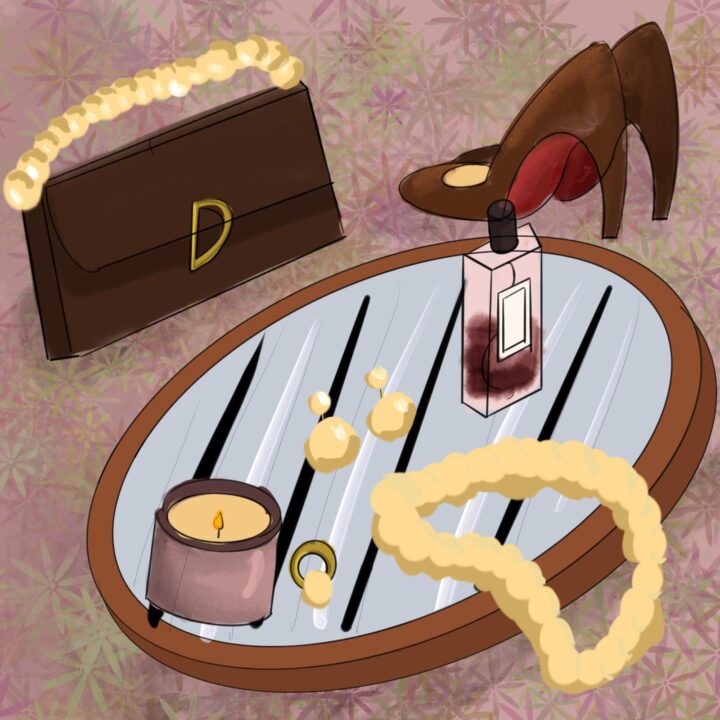Amethysts have been used by humans for millennia as decorative adornments, and this particular example of quartz is widely appreciated for its eye-catching violet hue and its alluring shimmer.
If you are keen to find out more about amethysts, read on for an introduction to everything you could ever want to know about this type of semi precious stone, from its etymology and history to its symbolism and meaning in modern culture.
Creation, location & value
Amethysts are found in several places around the world, sourced from the geodes that are left behind after volcanic activity has occurred.
The largest producer is Brazil, but there are also amethysts mined in places like Madagascar, South Korea, Russia and Canada, to name but a few.
The popularity of amethyst rings for women means that there is always plenty of demand for this gem, and it is the richness of the color which plays the biggest role in determining the value of individual stones. The deep purples of the amethysts mined in Siberia make them amongst the most sought-after and expensive, while also meaning that the carat count is not as relevant to cost as it is with other gems.
Jewelry set with amethysts can still be costly, although this typically comes down to the inclusion of other precious gems and rare metals, rather than the amethyst itself.
History & name explanation
While there is no specific evidence of humanity having interacted with amethysts in the unknowable mists of prehistory, it is safe to assume that any of our ancestors that found it would have been just as enamored with the glittering, shimmering color of these stones.
Thankfully the Ancient Egyptians are well-documented users of amethysts, and would go a step further than 21st century designers by choosing to use them as a medium for engraving. Etching images and symbols into the stones took expert craft skills and is a testament to how advanced this civilization was.
The name itself is actually derived from the language spoken in Ancient Greece, with the literal translation being ‘not drunk’. This entertaining etymology came about because Greeks believed that by wearing an amethyst around their neck, they would be able to stave off the effects of imbibing too much alcohol. Clearly preventing inebriation is not something that amethysts can actually do, but it is intriguing to see what attributes the ancient peoples of the Mediterranean ascribed to these stones.
From these earlier uses, amethysts would continue to spread globally over the course of many centuries, appearing in Britain during the middle ages and even being adopted in the Anglican branch of Christianity specifically because of their alleged anti-intoxication capabilities.
Interpretations & birthstone status
It is not just drunkenness which is legendarily avoided by wearing amethysts; throughout history a number of different capabilities have been associated with these stones.
One claim is that they can be used to ensure that the wearer maintains a level head, even when the circumstances around them might give them cause to go a little haywire.
Others believe that amethyst is packed with healing powers, allowing it to do everything from reducing anxiety and annoyance to pulling people out of pits of despair and grief. It could even improve your memory and make you more ambitious and motivated, if you buy into the more outlandish claims.
Irrespective of your position on the actual abilities amethyst brings to the table, there is no doubting that it is widely known as the birthstone for the month of February. While you do not need to have been born in this window to wear amethyst jewelry, if you are a February baby then it could be the push you need to pick between several precious stones when buying your next piece.
Jewelry uses & synthetic production
We have touched upon the various ways in which amethysts have been harnessed throughout history to enhance and augment jewelry of many types, and it is worth looking at the sheer variety that is on offer today to show how far the industry has come.
It is not common for amethysts to be used in engagement and wedding rings, as well as in everything from necklaces and earrings to bracelets and beyond.
While amethyst is semiprecious in nature, it works well when used alongside diamonds, since the brilliance of the latter’s crisp white reflectivity is a great counterpoint to the deep purples of the former.
Another point to mention is that lab-grown amethysts are a possibility, and are essentially indistinguishable to their naturally-occurring counterparts, without the use of equipment and techniques that are prohibitively expensive for general use. This is less of a problem than in the context of lab-grown diamond detection, for example, since amethysts are not at rare and can be mined with relative ease, as discussed above. Even so, it is worth being aware of this before you buy amethyst jewelry, so that you know exactly what you are getting ahead of committing to an order.
Sister stones
The quartz family of which amethyst is arguably the most famous member is fairly large, and color is the distinguishing factor between the varieties.
If violet is not for you, then yellows of citrine could tick the right boxes instead. The pinky hues of rose quartz is another popular option, while the gothic styling of smoky quartz is an intriguing alternative to the more radiant siblings on show.
Ultimately you need to consider all of your options and use your own aesthetic eye and tastes to determine whether amethyst is the right stone for you. There are also other things to keep in mind, such as the kind of cut that the stone should come in, and the metal in which it should be set to deliver the best results.
There is no wrong choice here, but rather a wonderful world of gemstones to discover, each with its own history, meaning and cultural importance which could sway you if it clicks with your personality.






